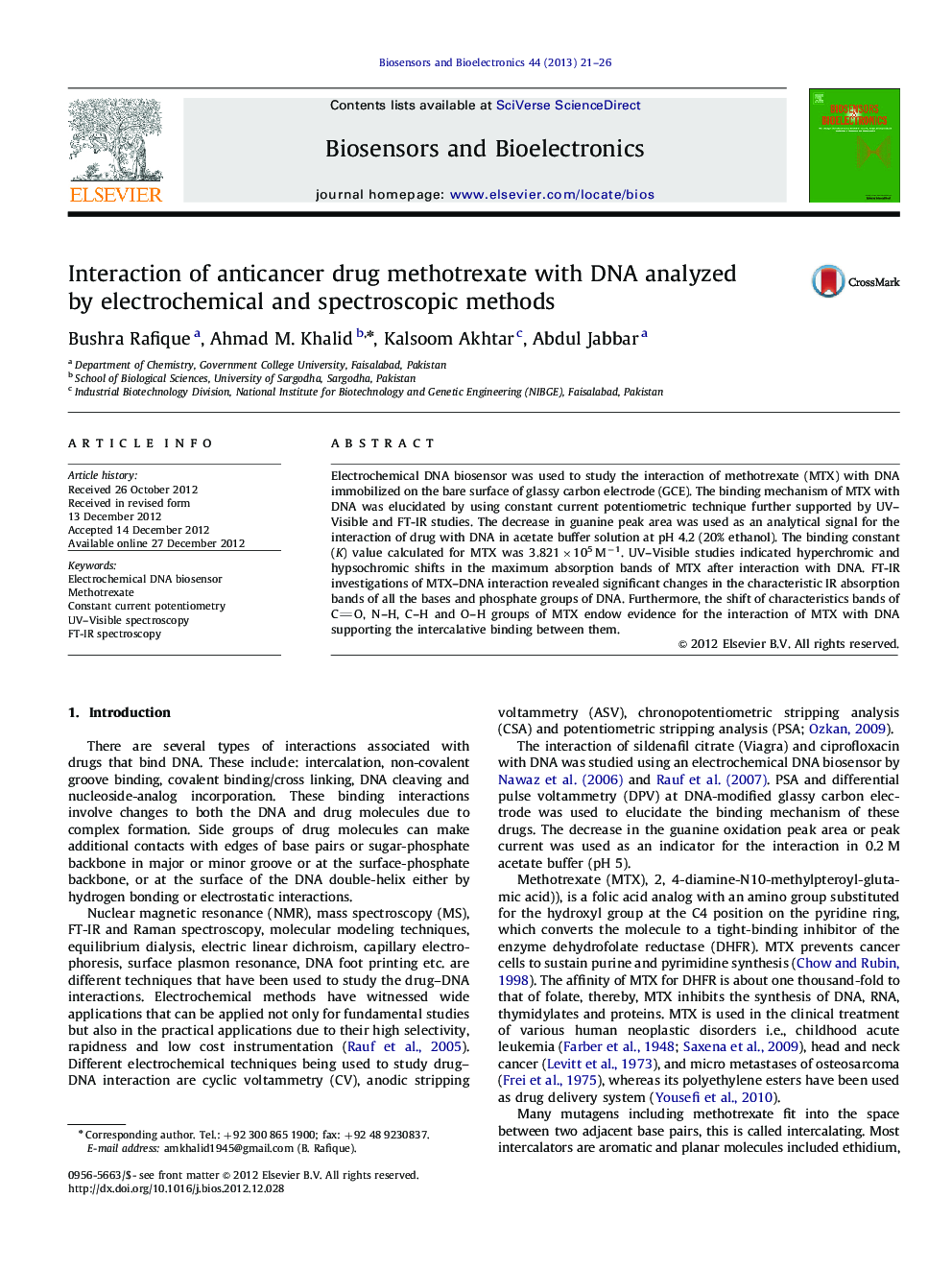| Article ID | Journal | Published Year | Pages | File Type |
|---|---|---|---|---|
| 866892 | Biosensors and Bioelectronics | 2013 | 6 Pages |
Electrochemical DNA biosensor was used to study the interaction of methotrexate (MTX) with DNA immobilized on the bare surface of glassy carbon electrode (GCE). The binding mechanism of MTX with DNA was elucidated by using constant current potentiometric technique further supported by UV–Visible and FT-IR studies. The decrease in guanine peak area was used as an analytical signal for the interaction of drug with DNA in acetate buffer solution at pH 4.2 (20% ethanol). The binding constant (K) value calculated for MTX was 3.821×105 M−1. UV–Visible studies indicated hyperchromic and hypsochromic shifts in the maximum absorption bands of MTX after interaction with DNA. FT-IR investigations of MTX–DNA interaction revealed significant changes in the characteristic IR absorption bands of all the bases and phosphate groups of DNA. Furthermore, the shift of characteristics bands of CO, NH, CH and OH groups of MTX endow evidence for the interaction of MTX with DNA supporting the intercalative binding between them.
► An electrochemical DNA biosensor was constructed by immobilizing the DNA to the surface of glassy carbon electrode (GCE). ► This electrode was used to determine the binding of methotraxate drug with DNA. ► Determination of bonding was done by using constant current potentiometric technique, UV–Visible and FTIR spectroscopy. ► Results demonstrated the intercalative binding between DNA and methotraxate.
